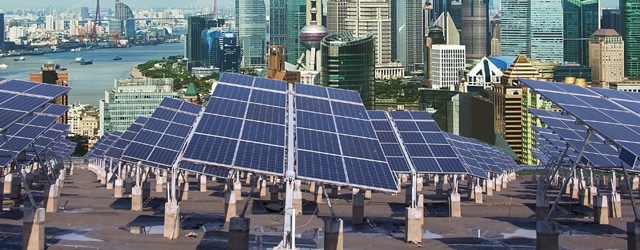
China is committed to investing more than $360 billion in domestic renewable energy and supporting technologies by 2020, according to recent pronouncements from its National Energy Administration, building on its existing position as the world’s largest investor in renewables.
Even more striking is the expansion of Chinese companies’ investments in green technologies overseas, which according to the US-based Institute for Energy Economics and Financial Analysis (IEEFA) surged by 60% last year to $32 billion.
These deals ranged from the $1.6 billion purchase of German waste-to-energy-development company EEW Energy from Waste by Beijing Enterprises Holdings, through to the purchase of a 25% stake in a Chilean producer of lithium (used in electric vehicles and home battery storage) for $2.5 billion by China’s Tianqi Lithium.
Tim Buckley, lead author of the IEEFA’s report and its director of energy finance studies, said that “the US is already slipping well behind China in the race to secure a larger share of the booming clean energy market.” He added that “with the incoming US administration talking up coal and gas, prospective domestic policy changes don’t bode well.”
“The idea of becoming a global leader in energy technology has been a priority for China’s government for more than 10 years,” says Philip Andrews-Speed, head of the Energy Security Division of the National University of Singapore’s Energy Studies Institute.
China is already by far the largest investor in domestic renewable energy. According to Bloomberg New Energy Finance, it invested some $102 billion in 2015, more than twice what the US spent on domestic renewables.
Greenpeace estimates that China has been installing new wind turbines at a rate of one every hour of every day, and, in 2016, installed enough solar panels to cover three soccer fields every hour of the year.
But Andrews-Speed argues that “while China may already be the dominant player in terms of quantity, it is likely that the US and other OECD [Organization for Economic Cooperation and Development] countries will retain the edge at the frontiers of research in many fields—for a while at least.”
And the shortcomings of China’s national electric grid mean that much of its newly installed renewable energy cannot be delivered to where it is needed. An estimated 19% of wind-power capacity had to stand idle during the first nine months of 2016, according to Greenpeace analysts, while in the US nearly all renewable energy enters the electric grid.
China is set to introduce a renewable energy quota system requiring every province to guarantee a certain percentage of its electricity comes from non-hydro renewables. Provinces unable to meet their quotas may have to suspend or reduce their fossil-fuel power-generation projects. This should encourage better connectivity of wind and solar power to the electric grid and speed up the country’s transition to a low-carbon economy.



